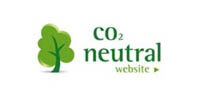Does your tuna brand use selective fishing methods and control their catch from ship to shelf to minimise environmental impacts?
| FISHING METHOD | DESCRIPTION | SUSTAINABILITY | |
 |
Net Free Fishing |
Fish are caught one at a time by hand, using a hook and line. This fishing method does not use nets. |
|
 |
FAD Free Fishing |
Nets are used on free school tuna. |
|
 |
Purse – Seine with FADs |
A fish aggregating device (FAD) is inserted into the ocean to attract the tuna. The FAD however also attracts many species of marine life. A large net encircles the area and closes like a purse. |
|
 |
Long Lines |
Short lines with baited hooks are attached to a longer main line (over 150km long) which is laid on the sea bottom or suspended by floats. |
|
 |
Trawling |
Marine life is herded into a large funnel shaped net as it is towed through the ocean behind boats. |
|
 |
Dredges |
A triangular steel frame and tooth bearing bar that ploughs up the sea-bed. Marine life are caught in heavy netting that joins at the sides and back. |
|



